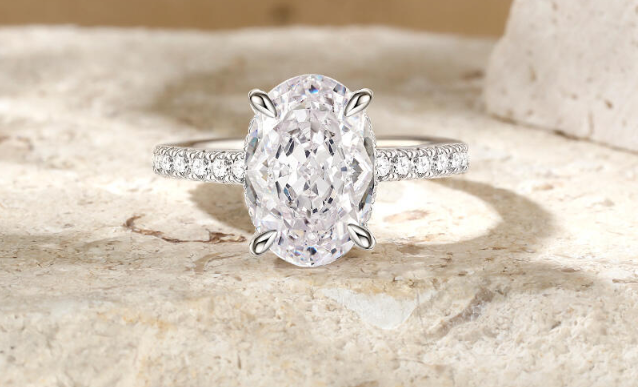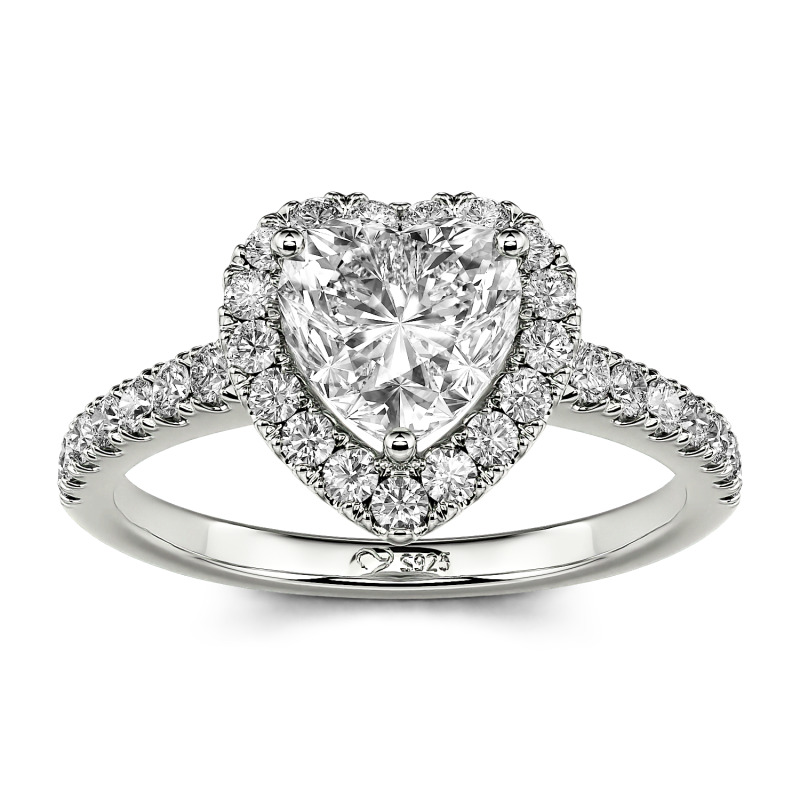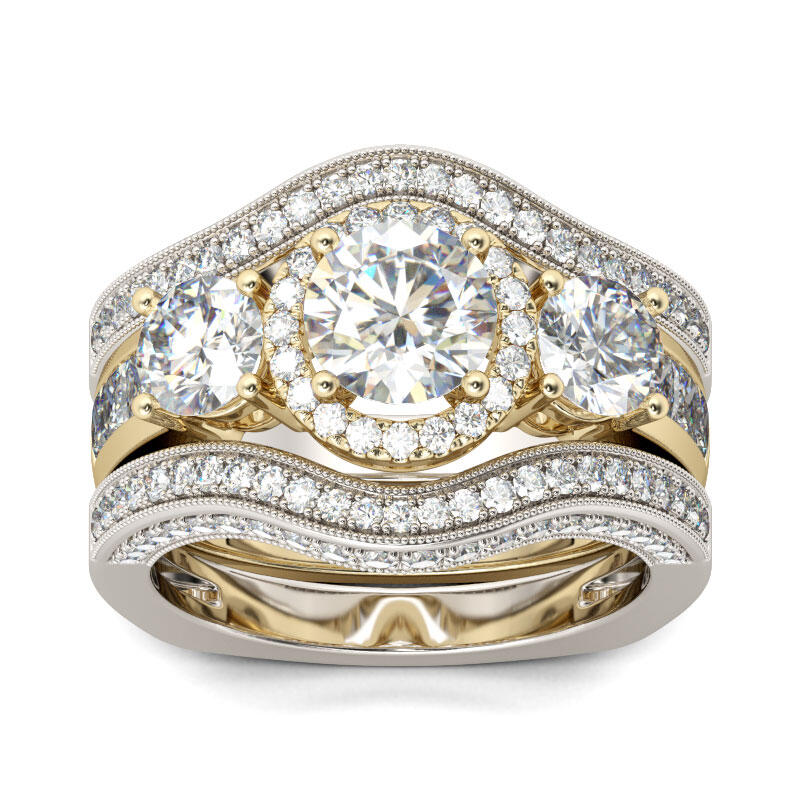
When you start the journey of searching for the perfect engagement ring, you quickly realize you’re not just choosing a stone—you’re choosing a setting, a style, and a story. Among terms like solitaire and halo, one style stands out for its unmatched brilliance: the pave ring. A Pavé setting is the secret weapon used by designers to maximize the sparkle and perceived size of a ring without overwhelming the center stone.
Here is a comprehensive guide to understanding what Pavé is, why it’s so popular, and what to consider before choosing this dazzling setting.
Navigate to:
What Exactly is a Pave Ring?
Pavé, derived from the French word for “paved,” is a setting technique where the ring band is lined with small, closely set diamonds, creating a continuous surface of brilliance. Unlike channel or bezel settings, pavé uses minimal metal: tiny holes are drilled into the band, accent stones are placed inside, and the surrounding metal is raised to form almost invisible beads or prongs. This method maximizes light exposure from all angles, creating the dazzling illusion of a ring entirely made of diamonds.
A Pavé setting can appear on the shoulders of the ring, creating a beautiful transition toward the center stone, or it can be used to form a sparkling halo around the center stone.
Why Choose a Pave Ring?
Pavé settings are consistently popular for several compelling reasons, primarily centered around visual impact and dramatic sparkle.
1. Maximum Brilliance and Fire
This is the number one reason couples choose Pavé. By packing numerous small, reflective surfaces closely together, the entire ring appears to be on fire. This combined sparkle gives a much larger overall visual impact than a plain metal band.
2. The Illusion of a Larger Center Stone
The accent diamonds in the band reflect light back onto the main diamond. This subtle halo effect frames the center stone, making it look larger and brighter than if it were set on a plain band. This is a fantastic way to maximize value and visual size.
3. Delicate and Elegant Aesthetic
Despite having many diamonds, a well-executed Pavé setting looks delicate because the metal securing the diamonds is almost invisible. It offers a luxurious look without the heavy, often chunky appearance of other multi-stone settings.
4. Versatility
Pavé pairs beautifully with almost every diamond shape and style. Whether you have a classic round, an elongated oval, or a strong emerald cut, a Pavé band will complement the center stone without competing with it.



The Three Main Types of Pave Setting
Not all Pavé is created equal. The type of setting affects the final look, brilliance, and durability of the ring.
| Pavé Type | Description | Aesthetic |
|---|---|---|
| Micro-Pavé | Uses extremely tiny diamonds (less than 0.01 carat each) held by microscopically small prongs. | Highly delicate, modern, and high-density sparkle. |
| French Pavé (or V-Cut) | The jeweler cuts v-shaped notches into the band, allowing the accent stones to sit deeper and closer together. | Minimal metal visibility, allowing maximum light entry for incredible fire. |
| U-Cut / Bright Pavé | Features a small U-shaped dip of metal between the stones. The diamonds are slightly larger than micro-Pavé. | Slightly bolder look, but often more secure due to the larger amount of metal surrounding the stone. |
Pro Tip: If you want the most delicate look, opt for Micro-Pavé. If you prioritize light performance and fire, French Pavé is often the top choice.
Important Considerations Before Buying Pave Rings
While pavé rings offer unmatched brilliance, they also come with practical considerations that differ from a simple solitaire setting.
1. Potential for Stone Loss
Because the accent stones are held only by tiny prongs, there is a small risk that stones can loosen and fall out if the ring suffers a hard knock or sustained trauma. We always recommend professional inspection every 6-12 months.
2. Resizing Limitations
If the accent diamonds go all the way around the band (an eternity style Pavé), resizing the ring can be extremely difficult or impossible. If the diamonds only go halfway around (a half-eternity style), sizing is usually much simpler. So it’s crucial to know your partner’s finger size accurately before proposing, especially if opting for a full eternity band.
Tips for Styling a Pave Ring
Pavé is incredibly versatile, but it truly shines in certain combinations:
- The Classic Upgrade: Pairing a round or princess-cut solitaire with a Pavé band provides the traditional elegance of a solitaire but elevates the piece with added glamour.
- The Dramatic Duo: Pairing a Pavé band with a Pavé Halo (a cluster of accent stones surrounding the center diamond) creates a ring of unmatched, head-turning sparkle and maximizes the stone’s footprint.
- Wedding Band Pairing: Pavé bands look fantastic next to a simple metal wedding band, which provides a clean contrast. Alternatively, pairing it with a matching Pavé wedding band creates the ultimate bridal stack—a solid block of brilliance.
How to Clean Pave Rings?
Pavé settings, with their numerous tiny prongs, can easily trap dirt and residues, which may significantly dull their sparkle without regular care. To maintain their brilliance, we recommend soaking the ring in warm water with mild dish soap and gently cleaning under the band with a soft-bristled toothbrush.
More Jeulia Post:
A Comprehensive Guide to Wedding Ring Types
